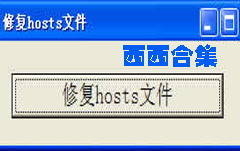Volley是Android开发者新的瑞士军刀,它提供了优美的框架,使得Android应用程序网络访问更容易和更快。Volley抽象实现了底层的HTTP Client库,让你不关注HTTP Client细节,专注于写出更加漂亮、干净的RESTful HTTP请求。另外,Volley请求会异步执行,不阻挡主线程。
Volley提供的功能
简单的讲,提供了如下主要的功能:
1、封装了的异步的RESTful 请求API;
2、一个优雅和稳健的请求队列;
3、一个可扩展的架构,它使开发人员能够实现自定义的请求和响应处理机制;
4、能够使用外部HTTP Client库;
5、缓存策略;
6、自定义的网络图像加载视图(NetworkImageView,ImageLoader等);
为什么使用异步HTTP请求?
Android中要求HTTP请求异步执行,如果在主线程执行HTTP请求,可能会抛出android.os.NetworkOnMainThreadException 异常。阻塞主线程有一些严重的后果,它阻碍UI渲染,用户体验不流畅,它可能会导致可怕的ANR(Application Not Responding)。要避免这些陷阱,作为一个开发者,应该始终确保HTTP请求是在一个不同的线程。
怎样使用Volley
这篇博客将会详细的介绍在应用程程中怎么使用volley,它将包括一下几方面:
1、安装和使用Volley库
2、使用请求队列
3、异步的JSON、String请求
4、取消请求
5、重试失败的请求,自定义请求超时
6、设置请求头(HTTP headers)
7、使用Cookies
8、错误处理
安装和使用Volley库
引入Volley非常简单,首先,从git库先克隆一个下来:
git clone https://android.googlesource.com/platform/frameworks/volley
然后编译为jar包,再把jar包放到自己的工程的libs目录。
使用请求队列
Volley的所有请求都放在一个队列,然后进行处理,这里是你如何将创建一个请求队列:
RequestQueue mRequestQueue = Volley.newRequestQueue(this); // 'this' is Context
理想的情况是把请求队列集中放到一个地方,最好是初始化应用程序类中初始化请求队列,下面类做到了这一点:
public class ApplicationController extends Application {
/**
* Log or request TAG
*/
public static final String TAG = "VolleyPatterns";
/**
* Global request queue for Volley
*/
private RequestQueue mRequestQueue;
/**
* A singleton instance of the application class for easy access in other places
*/
private static ApplicationController sInstance;
@Override
public void onCreate() {
super.onCreate();
// initialize the singleton
sInstance = this;
}
/**
* @return ApplicationController singleton instance
*/
public static synchronized ApplicationController getInstance() {
return sInstance;
}
/**
* @return The Volley Request queue, the queue will be created if it is null
*/
public RequestQueue getRequestQueue() {
// lazy initialize the request queue, the queue instance will be
// created when it is accessed for the first time
if (mRequestQueue == null) {
mRequestQueue = Volley.newRequestQueue(getApplicationContext());
}
return mRequestQueue;
}
/**
* Adds the specified request to the global queue, if tag is specified
* then it is used else Default TAG is used.
*
* @param req
* @param tag
*/
public <T> void addToRequestQueue(Request<T> req, String tag) {
// set the default tag if tag is empty
req.setTag(TextUtils.isEmpty(tag) ? TAG : tag);
VolleyLog.d("Adding request to queue: %s", req.getUrl());
getRequestQueue().add(req);
}
/**
* Adds the specified request to the global queue using the Default TAG.
*
* @param req
* @param tag
*/
public <T> void addToRequestQueue(Request<T> req) {
// set the default tag if tag is empty
req.setTag(TAG);
getRequestQueue().add(req);
}
/**
* Cancels all pending requests by the specified TAG, it is important
* to specify a TAG so that the pending/ongoing requests can be cancelled.
*
* @param tag
*/
public void cancelPendingRequests(Object tag) {
if (mRequestQueue != null) {
mRequestQueue.cancelAll(tag);
}
}
}异步的JSON、String请求
Volley提供了以下的实用工具类进行异步HTTP请求:
JsonObjectRequest — To send and receive JSON Object from the Server
JsonArrayRequest — To receive JSON Array from the Server
StringRequest — To retrieve response body as String (ideally if you intend to parse the response by yourself)
JsonObjectRequest
这个类可以用来发送和接收JSON对象。这个类的一个重载构造函数允许设置适当的请求方法(DELETE,GET,POST和PUT)。如果您正在使用一个RESTful服务端,可以使用这个类。下面的示例显示如何使GET和POST请求。
GET请求:
final String URL = "/volley/resource/12";
// pass second argument as "null" for GET requests
JsonObjectRequest req = new JsonObjectRequest(URL, null,
new Response.Listener<JSONObject>() {
@Override
public void onResponse(JSONObject response) {
try {
VolleyLog.v("Response:%n %s", response.toString(4));
} catch (JSONException e) {
e.printStackTrace();
}
}
}, new Response.ErrorListener() {
@Override
public void onErrorResponse(VolleyError error) {
VolleyLog.e("Error: ", error.getMessage());
}
});
// add the request object to the queue to be executed
ApplicationController.getInstance().addToRequestQueue(req);
POST请求:
final String URL = "/volley/resource/12";
// Post params to be sent to the server
HashMap<String, String> params = new HashMap<String, String>();
params.put("token", "AbCdEfGh123456");
JsonObjectRequest req = new JsonObjectRequest(URL, new JSONObject(params),
new Response.Listener<JSONObject>() {
@Override
public void onResponse(JSONObject response) {
try {
VolleyLog.v("Response:%n %s", response.toString(4));
} catch (JSONException e) {
e.printStackTrace();
}
}
}, new Response.ErrorListener() {
@Override
public void onErrorResponse(VolleyError error) {
VolleyLog.e("Error: ", error.getMessage());
}
});
// add the request object to the queue to be executed
ApplicationController.getInstance().addToRequestQueue(req);JsonArrayRequest
这个类可以用来接受 JSON Arrary,不支持JSON Object。这个类现在只支持 HTTP GET。由于支持GET,你可以在URL的后面加上请求参数。类的构造函数不支持请求参数。
final String URL = "/volley/resource/all?count=20";
JsonArrayRequest req = new JsonArrayRequest(URL, new Response.Listener<JSONArray> () {
@Override
public void onResponse(JSONArray response) {
try {
VolleyLog.v("Response:%n %s", response.toString(4));
} catch (JSONException e) {
e.printStackTrace();
}
}
}, new Response.ErrorListener() {
@Override
public void onErrorResponse(VolleyError error) {
VolleyLog.e("Error: ", error.getMessage());
}
});
// add the request object to the queue to be executed
ApplicationController.getInstance().addToRequestQueue(req);StringRequest
这个类可以用来从服务器获取String,如果想自己解析请求响应可以使用这个类,例如返回xml数据。它还可以使用重载的构造函数定制请求。
final String URL = "/volley/resource/recent.xml";
StringRequest req = new StringRequest(URL, new Response.Listener<String>() {
@Override
public void onResponse(String response) {
VolleyLog.v("Response:%n %s", response);
}
}, new Response.ErrorListener() {
@Override
public void onErrorResponse(VolleyError error) {
VolleyLog.e("Error: ", error.getMessage());
}
});
// add the request object to the queue to be executed
ApplicationController.getInstance().addToRequestQueue(req);取消请求
Volley提供了强大的API取消未处理或正在处理的请求。取消请求最简单的方法是调用请求队列cancelAll(tag)的方法,前提是你在添加请求时设置了标记。这样就能使标签标记的请求挂起。
给请求设置标签:
request.setTag("My Tag");使用ApplicationController添加使用了标签的请求到队列中:
ApplicationController.getInstance().addToRequestQueue(request, "My Tag");
取消所有指定标记的请求:
mRequestQueue.cancelAll("My Tag");重试失败的请求,自定义请求超时
Volley中没有指定的方法来设置请求超时时间,可以设置RetryPolicy 来变通实现。DefaultRetryPolicy类有个initialTimeout参数,可以设置超时时间。要确保最大重试次数为1,以保证超时后不重新请求。
Setting Request Timeout
request.setRetryPolicy(new DefaultRetryPolicy(20 * 1000, 1, 1.0f));
设置请求头(HTTP headers) 如果你想失败后重新请求(因超时),您可以指定使用上面的代码,增加重试次数。注意最后一个参数,它允许你指定一个退避乘数可以用来实现“指数退避”来从RESTful服务器请求数据。
有时候需要给HTTP请求添加额外的头信息,一个常用的例子是添加 “Authorization”到HTTP 请求的头信息。Volley请求类提供了一个 getHeaers()的方法,重载这个方法可以自定义HTTP 的头信息。
添加头信息:
JsonObjectRequest req = new JsonObjectRequest(URL, new JSONObject(params),
new Response.Listener<JSONObject>() {
@Override
public void onResponse(JSONObject response) {
// handle response
}
}, new Response.ErrorListener() {
@Override
public void onErrorResponse(VolleyError error) {
// handle error
}
}) {
@Override
public Map<String, String> getHeaders() throws AuthFailureError {
HashMap<String, String> headers = new HashMap<String, String>();
headers.put("CUSTOM_HEADER", "Yahoo");
headers.put("ANOTHER_CUSTOM_HEADER", "Google");
return headers;
}
};使用Cookies
Volley中没有直接的API来设置cookies,Volley的设计理念就是提供干净、简洁的API来实现RESTful HTTP请求,不提供设置cookies是合理的。
下面是修改后的ApplicationController类,这个类修改了getRequestQueue()方法,包含了 设置cookie方法,这些修改还是有些粗糙。
// http client instance
private DefaultHttpClient mHttpClient;
public RequestQueue getRequestQueue() {
// lazy initialize the request queue, the queue instance will be
// created when it is accessed for the first time
if (mRequestQueue == null) {
// Create an instance of the Http client.
// We need this in order to access the cookie store
mHttpClient = new DefaultHttpClient();
// create the request queue
mRequestQueue = Volley.newRequestQueue(this, new HttpClientStack(mHttpClient));
}
return mRequestQueue;
}
/**
* Method to set a cookie
*/
public void setCookie() {
CookieStore cs = mHttpClient.getCookieStore();
// create a cookie
cs.addCookie(new BasicClientCookie2("cookie", "spooky"));
}
// add the cookie before adding the request to the queue
setCookie();
// add the request to the queue
mRequestQueue.add(request);错误处理
正如前面代码看到的,在创建一个请求时,需要添加一个错误监听onErrorResponse。如果请求发生异常,会返回一个VolleyError实例。
以下是Volley的异常列表:
AuthFailureError:如果在做一个HTTP的身份验证,可能会发生这个错误。
NetworkError:Socket关闭,服务器宕机,DNS错误都会产生这个错误。
NoConnectionError:和NetworkError类似,这个是客户端没有网络连接。
ParseError:在使用JsonObjectRequest或JsonArrayRequest时,如果接收到的JSON是畸形,会产生异常。
SERVERERROR:服务器的响应的一个错误,最有可能的4xx或5xx HTTP状态代码。
TimeoutError:Socket超时,服务器太忙或网络延迟会产生这个异常。默认情况下,Volley的超时时间为2.5秒。如果得到这个错误可以使用RetryPolicy。
可以使用一个简单的Help类根据这些异常提示相应的信息:
public class VolleyErrorHelper {
/**
* Returns appropriate message which is to be displayed to the user
* against the specified error object.
*
* @param error
* @param context
* @return
*/
public static String getMessage(Object error, Context context) {
if (error instanceof TimeoutError) {
return context.getResources().getString(R.string.generic_server_down);
}
else if (isServerProblem(error)) {
return handleServerError(error, context);
}
else if (isNetworkProblem(error)) {
return context.getResources().getString(R.string.no_internet);
}
return context.getResources().getString(R.string.generic_error);
}
/**
* Determines whether the error is related to network
* @param error
* @return
*/
private static boolean isNetworkProblem(Object error) {
return (error instanceof NetworkError) || (error instanceof NoConnectionError);
}
/**
* Determines whether the error is related to server
* @param error
* @return
*/
private static boolean isServerProblem(Object error) {
return (error instanceof ServerError) || (error instanceof AuthFailureError);
}
/**
* Handles the server error, tries to determine whether to show a stock message or to
* show a message retrieved from the server.
*
* @param err
* @param context
* @return
*/
private static String handleServerError(Object err, Context context) {
VolleyError error = (VolleyError) err;
NetworkResponse response = error.networkResponse;
if (response != null) {
switch (response.statusCode) {
case 404:
case 422:
case 401:
try {
// server might return error like this { "error": "Some error occured" }
// Use "Gson" to parse the result
HashMap<String, String> result = new Gson().fromJson(new String(response.data),
new TypeToken<Map<String, String>>() {
}.getType());
if (result != null && result.containsKey("error")) {
return result.get("error");
}
} catch (Exception e) {
e.printStackTrace();
}
// invalid request
return error.getMessage();
default:
return context.getResources().getString(R.string.generic_server_down);
}
}
return context.getResources().getString(R.string.generic_error);
}
}总结:
Volley是一个非常好的库,你可以尝试使用一下,它会帮助你简化网络请求,带来更多的益处。
我也希望更加全面的介绍Volley,以后可能会介绍使用volley加载图像的内容,欢迎关注。
谢谢你的阅读,希望你能喜欢。



 下载
下载 
 下载
下载  下载
下载  下载
下载 
 下载
下载  下载
下载  喜欢
喜欢  顶
顶 难过
难过 囧
囧 围观
围观 无聊
无聊

